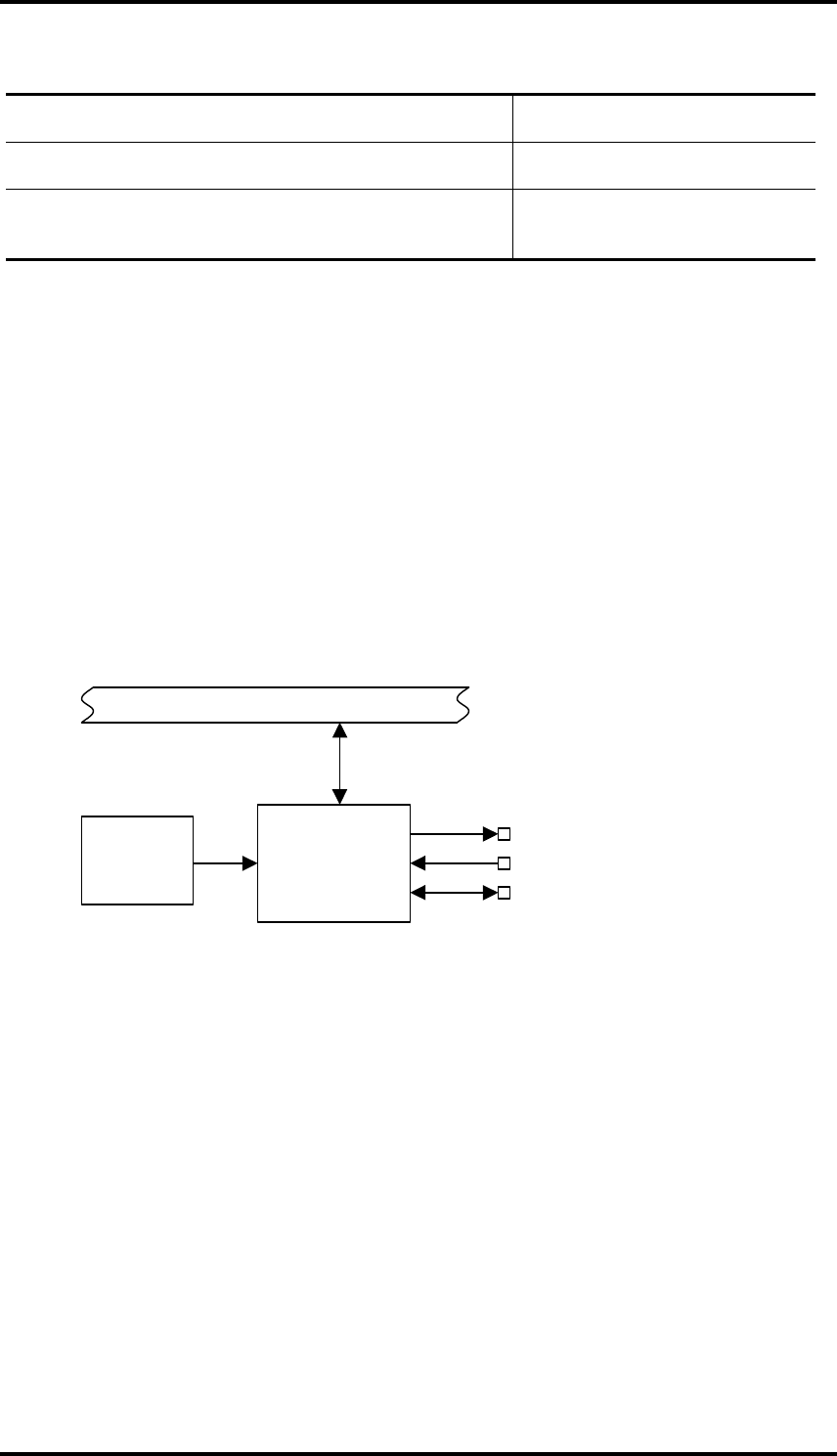
Chapter 4 Software Development
page 4-27
Table 4.5.1. Library Functions Calling read() and write()
I/O Library Function Required Low-Level Function
fgetc,fgets,fscanf,getc,getchar,gets,scanf read
fflush,fprintf,fputc,fputs,fwrite,printf,putc,putchar,puts,
vfprintf,vprintf
write
For further details on these and other library functions, refer to the RTL665S Run-Time Library
Reference.
The source code file stdrw573.c contains the source code and settings for these two low-level
functions. Including it on the compiler command line provides the user program with access to the
standard library I/O functions.
Command Line
cl665s /T m66573 /H /WIN [user program] stdrw573.c l66ks50s.lib <enter>
4.5.2 Serial Port
Including the source code file stdrw573.c provides the user program with access to this standard I/O.
This Section discusses the MSM66Q573 internal serial port that the JOB60851 board uses for this
purpose, with the structure outlined in Figure 4.5.2.
Baud rate
generator
(BRG)
SIO0 (UART)
I/O control
circuitry I/O
buffers
MSM66Q573 internal bus
Transmit data: TXD0 (Port7_1)
Receive data: RXD0 (Port7_0)
External clock: RXC0 (Port7_2)
I/O data
Figure 4.5.2. Serial Port Structure
Port 7_1 on the is the MSM66Q573 TX pin transmitting the standard output data to the terminal
emulator running on the host personal computer; Port 7_0, the RX pin receiving the standard input
data in the reverse direction. (The JOB60851 board does not use Port 7_2.)
The baud rate generator (BRG) uses the overflow signal from MSM66Q573 internal timer 3.


















